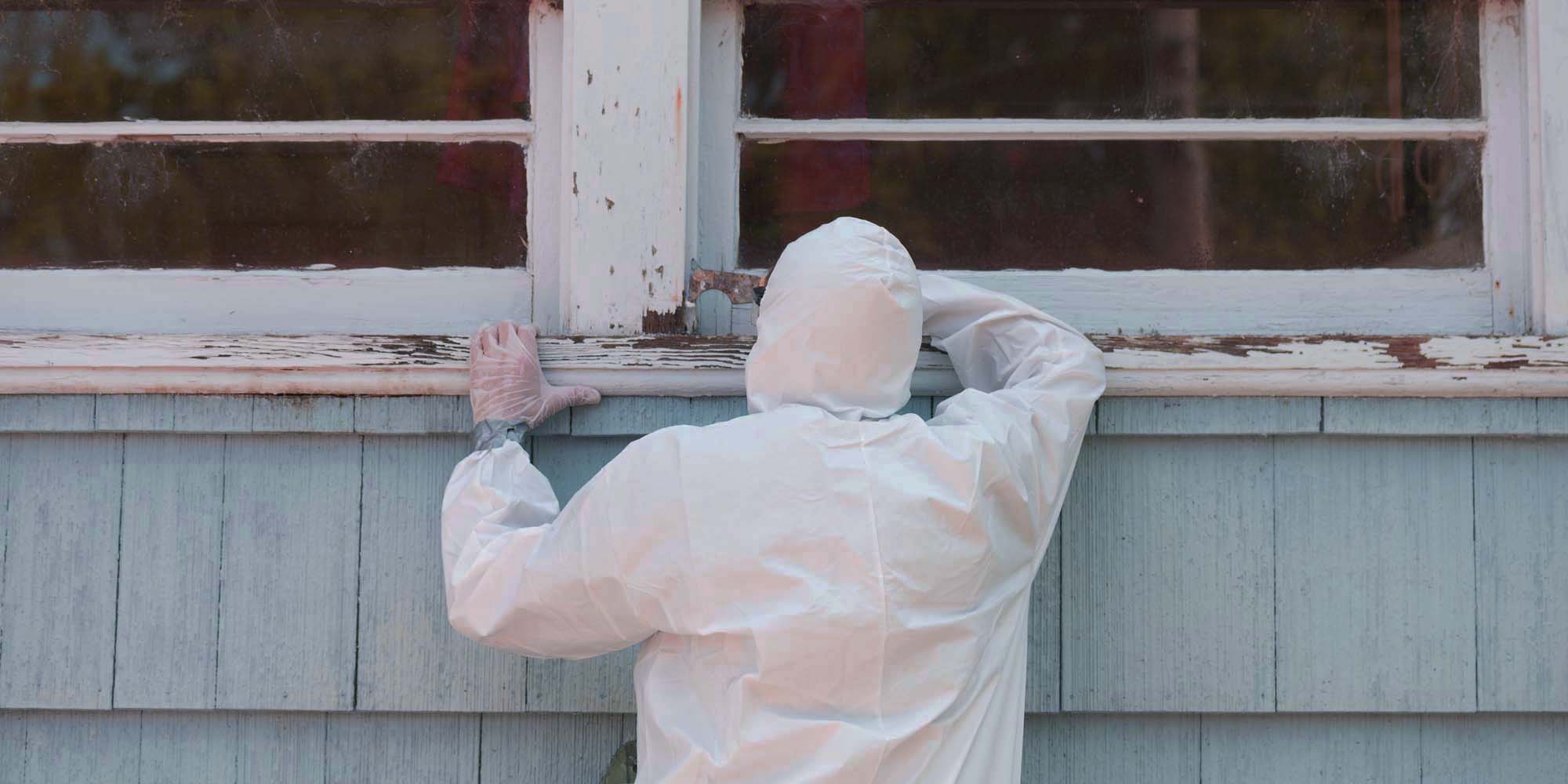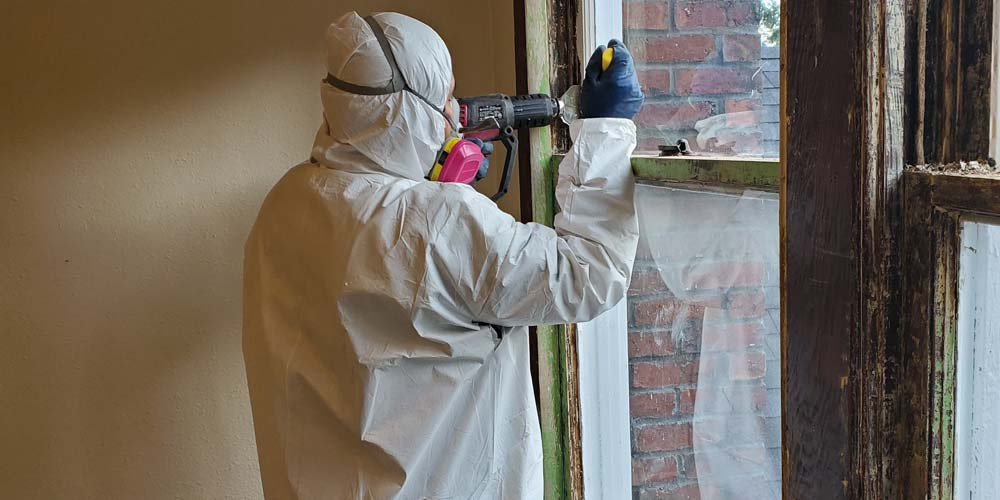Professional Lead Paint Removal Company-- Serving All NYC Boroughs
Professional Lead Paint Removal Company-- Serving All NYC Boroughs
Blog Article
Comprehensive Overview on Effective Lead Offense Elimination Strategies
In the realm of ecological security, addressing lead offenses requires a meticulous and structured method. This extensive overview starts by highlighting the essential preliminary steps of determining lead dangers with advanced evaluation and screening techniques. The guide elaborates on the importance of sticking to rigorous security procedures throughout the removal procedure, including the usage of proper PPE and separating influenced locations.
Recognizing Lead Threats
Identifying lead threats is an essential initial action in alleviating the risks related to lead exposure. Lead, a hazardous metal, can be present in different ecological mediums, consisting of paint, soil, water, and dirt. It presents severe wellness dangers, particularly to youngsters and pregnant ladies, bring about neurological damage and developing delays. As a result, specific identification of prospective lead sources is essential for effective remediation.
The first stage in recognizing lead dangers involves recognizing common lead resources within the built environment. Frameworks built prior to 1978 are particularly prone due to the widespread use lead-based paint during that duration. In addition, soil contamination can take place from degrading exterior paint, commercial emissions, or historic use leaded fuel.
One more significant resource is lead piping and plumbing components, which can seep lead into drinking water. Customer goods such as toys, ceramics, and imported products may additionally have hazardous lead degrees. Significantly, work-related atmospheres and leisure activities entailing lead can track pollutants into homes.
Assessment and Testing
When attending to lead threats, efficient evaluation and screening are vital. Initial evaluation generally involves a visual assessment to recognize prospective lead resources, such as degrading paint or infected dust.

Dirt clean sampling is one more critical strategy, especially in property setups. By gathering samples from floors, windowsills, and various other surface areas, this approach supplies understandings right into prospective direct exposure dangers. Soil screening around structure borders is crucial to detect lead contamination that could posture dangers, specifically to children.
Safe Elimination Procedures
Upon finishing extensive analysis and screening, carrying out secure elimination treatments is the following critical phase in attending to lead hazards. This procedure ensures that lead-contaminated products are successfully and safely removed, decreasing threat to both click here to read employees and citizens. The initial step involves isolating the damaged location making use of plastic sheet and appropriate sealing techniques to stop the spread of lead dirt.
Workers need to put on appropriate individual protective equipment (PPE), consisting of respirators, gloves, and disposable coveralls, to alleviate direct exposure. Utilizing specialized devices and wet methods, such as damp sanding or utilizing HEPA-filtered vacuum cleaners, decreases the diffusion of lead fragments. It is critical to stay clear of dry fining sand or abrasive blowing up, as these approaches can create dangerous lead dirt.
Garbage disposal is one more important part; all contaminated materials have to be securely nabbed and classified according to EPA and regional policies. In addition, comprehensive cleaning of the workspace with HEPA vacuums and wet cleaning ensures the removal of residual lead bits.
Post-Removal Confirmation

Confirmation of successful Lead Violation Removal in NYC lead removal, understood as post-removal confirmation, is essential to ensure the security and habitability of the remediated area. This inspection guarantees that all recognized resources of lead have been resolved and that no noticeable indicators of contamination stay.
Complying with the visual examination, environmental sampling is conducted. This entails gathering dirt, soil, and occasionally water examples from the remediated area. Approved labs analyze these examples to measure lead levels, ensuring they fall below the safety and security limits developed by governing bodies such as the Environmental Security Firm (EPA)
On top of that, air top quality testing might be carried out to identify airborne lead fragments, particularly in cases where extensive lead-based paint removal or restoration has actually occurred. The results of these examinations supply quantitative data validating that the lead levels are within acceptable weblink limits.
Eventually, post-removal verification offers as an essential checkpoint, validating the efficiency of the lead reduction efforts and securing the health and wellness of owners and site visitors.
Precautionary Procedures and Maintenance

A key safety net includes the use of lead-safe certified contractors for any kind of renovation, repair service, or painting tasks. These experts are educated in practices that decrease lead dust and debris. Furthermore, maintaining coloured surfaces to prevent chipping or peeling off is crucial, as weakening paint can launch lead particles right into the environment.
Educational campaigns targeting building proprietors and lessees concerning the risks of lead and the importance of reporting any type of prospective hazards can additionally enhance preventative initiatives. Routine cleaning making use of HEPA vacuums and wet wiping strategies can dramatically reduce lead dirt buildup.
Conclusion
In recap, efficient lead offense elimination demands a meticulous approach encompassing comprehensive analysis, precise screening, and stringent elimination procedures. Recurring inspections and upkeep are essential to alleviate future lead dangers, therefore safeguarding public health and wellness and guaranteeing continual conformity with regulatory needs.
Report this page